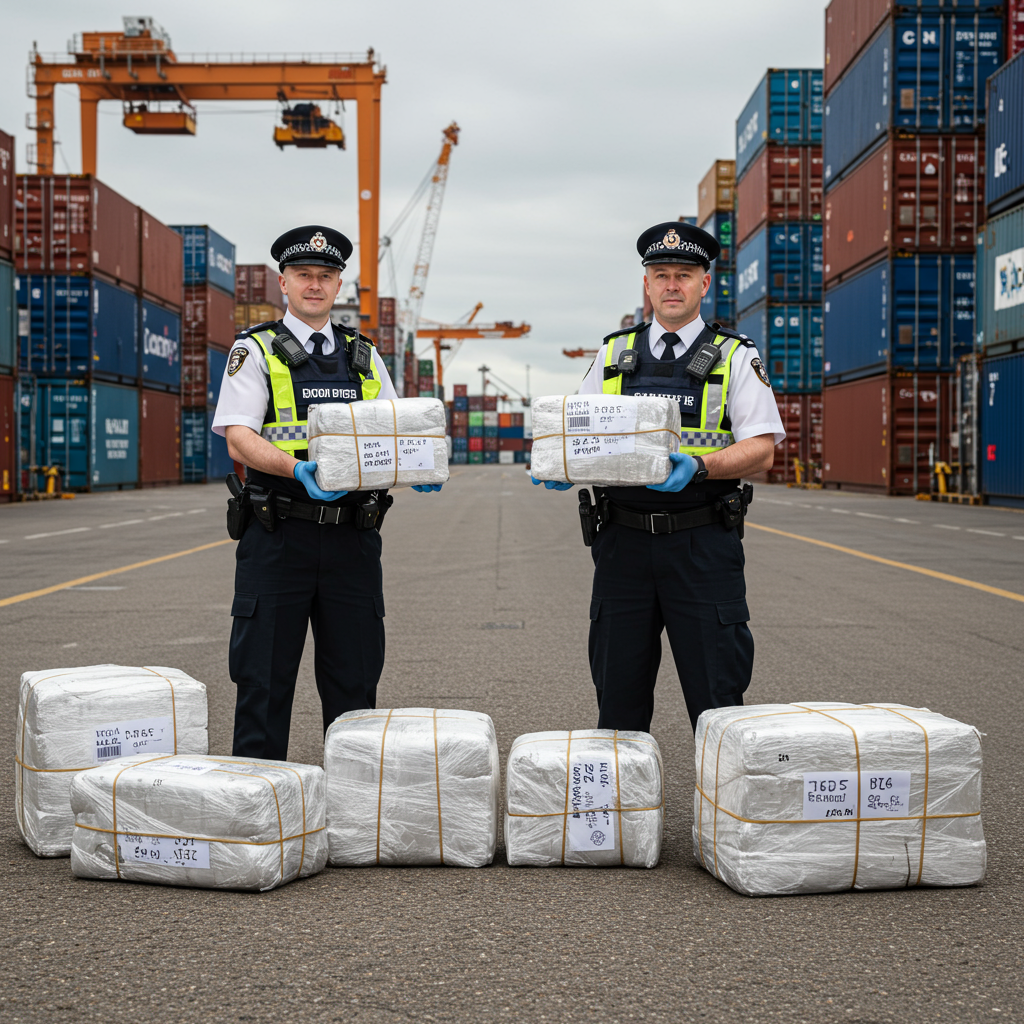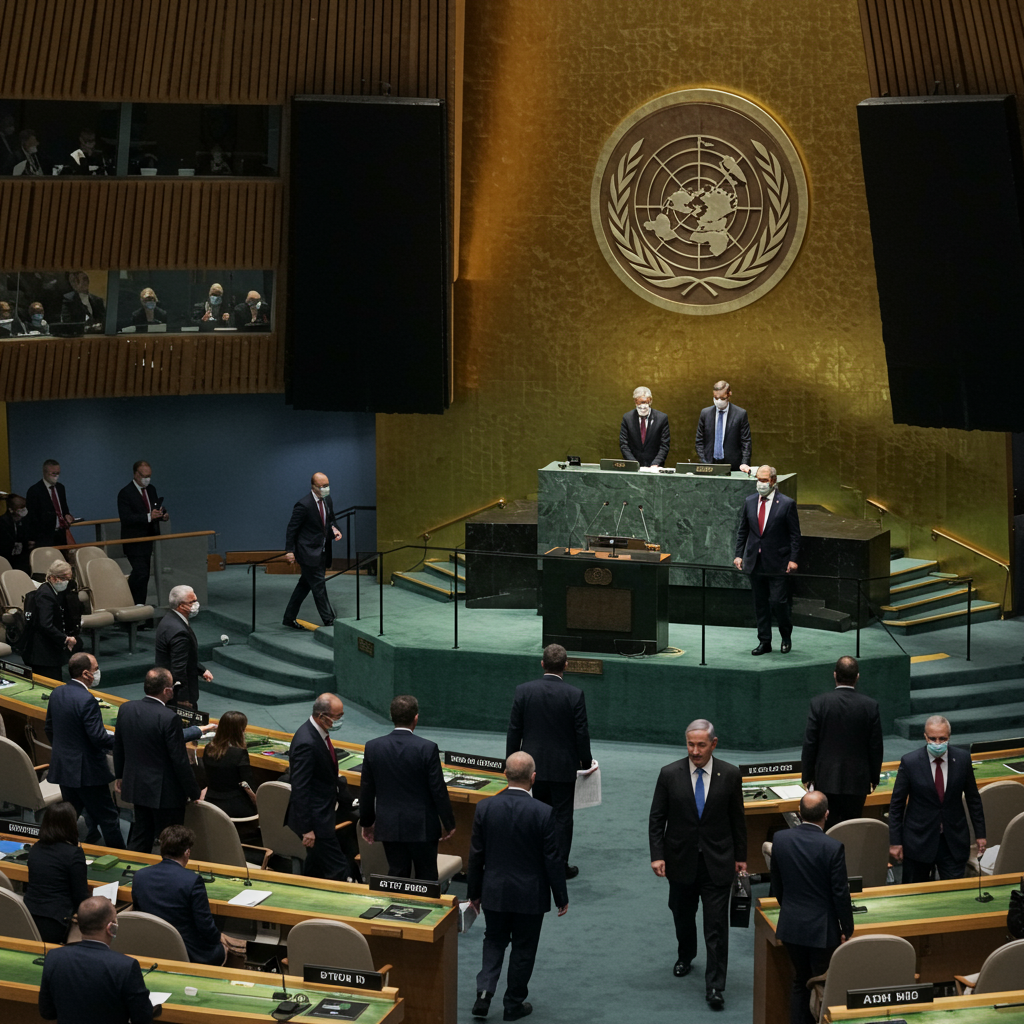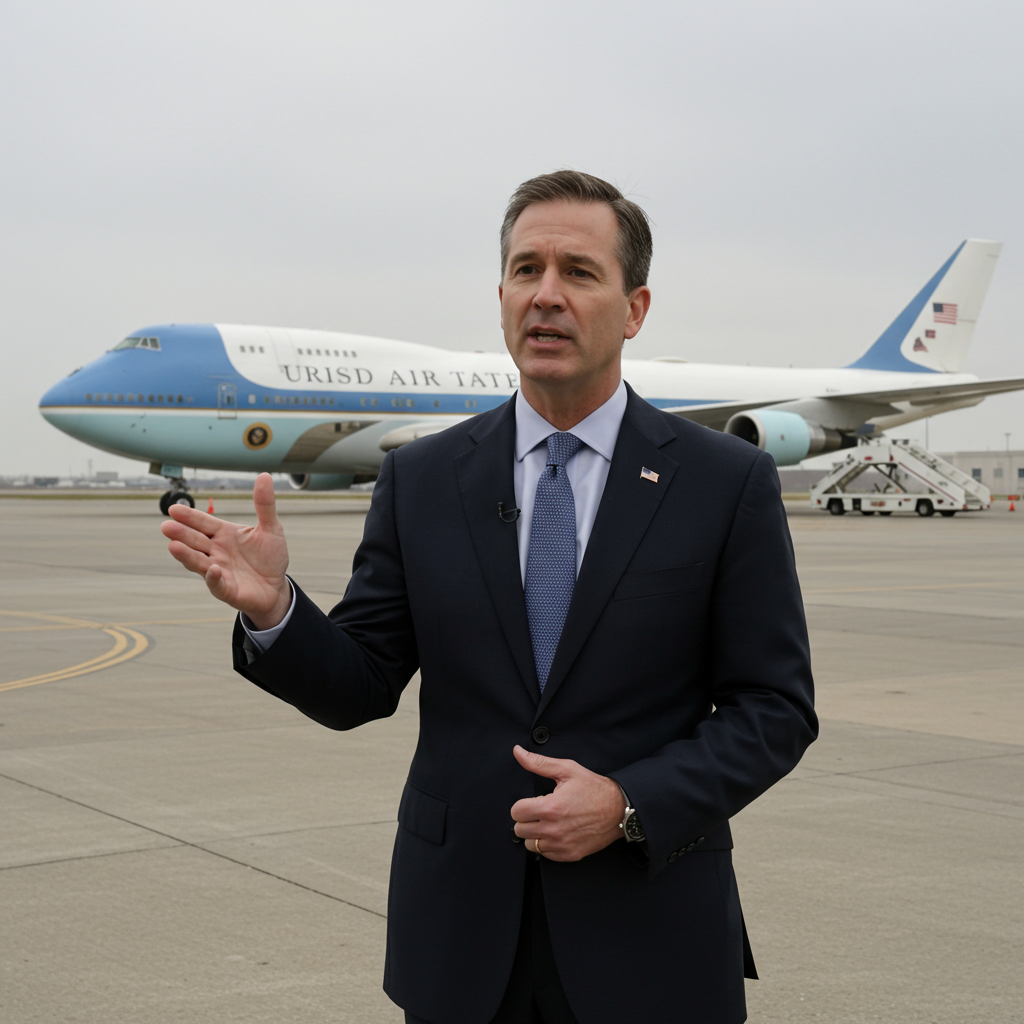In a landmark operation at London Gateway port in Essex, UK border force officers have seized a colossal shipment of cocaine valued at approximately £96 million. Weighing in at a staggering 2.4 tonnes, this massive haul represents one of the most significant drug interceptions in the UK in recent history. Discovered hidden aboard a container vessel arriving from Panama, the bust underscores the persistent challenge of large-scale illicit drug importation and highlights the effectiveness of intelligence-led law enforcement operations aimed at dismantling organised crime networks.
The seizure, which took place earlier this month, is officially the sixth-largest cocaine detection recorded in the United Kingdom since records began. This scale places it among the most impactful drug busts of the past decade, delivering a substantial financial and operational blow to the criminal organisations responsible for attempting to flood the UK with illegal narcotics. The operation required considerable effort from Border Force officials and port staff, who had to meticulously search and relocate 37 large containers within the vessel to uncover the concealed illicit cargo.
Landmark Seizure at London Gateway
The interception occurred at London Gateway port, located in Stanford-le-Hope within the county of Essex. This facility is a major hub for container traffic entering the UK, making it a prime target for international drug traffickers attempting to smuggle large quantities of Class A substances into the country. The vessel carrying the cocaine had originated from Panama, a known transit point in global drug supply chains originating in South America.
Border Force initiated this critical operation following specific intelligence regarding the suspicious shipment. Specialist maritime officers were deployed to identify and intercept the vessel upon its arrival. The subsequent search was complex, involving the systematic movement of numerous large shipping containers to access the drugs deliberately concealed within the cargo hold. This method of concealment under legitimate containers is recognised by Border Force as a common tactic used by international gangs leveraging large container ships for smuggling.
Operational Challenges and Tactics
Locating 2.4 tonnes of cocaine hidden among thousands of containers is no small feat. The success of this operation highlights the sophistication required in modern border security. It wasn’t a random search but an intelligence-led effort, meaning authorities had specific information directing them to the likelihood of illicit cargo on this particular vessel. This precision minimises disruption to legitimate trade while focusing resources where they are most needed.
The process of physically accessing the drugs involved cooperation between Border Force personnel and the port operator, demonstrating the vital partnership required at major entry points. Moving 37 large containers is a complex logistical undertaking, further indicating the deliberate nature of the concealment and the lengths criminals go to evade detection. The successful execution of this step was crucial in physically recovering the massive quantity of narcotics.
Striking a Blow Against Organised Crime
Border Force issued a statement confirming the significance of the seizure, describing it as delivering a “significant financial and operational blow” to the organised crime groups involved. Such large quantities represent enormous potential profits for these networks, and their loss disrupts their funding, supply lines, and logistical capabilities.
Charlie Eastaugh, the maritime director for Border Force, emphasised the scale of the bust, calling it “one of the largest of its kind.” He highlighted that it demonstrates the ongoing efforts of dedicated Border Force maritime officers to stay “one step ahead” of criminal gangs. Eastaugh delivered a clear message to these criminals, stating that law enforcement is increasingly leveraging intelligence capabilities and international cooperation to actively disrupt and dismantle their operations. He also mentioned collaborative training programmes underway across Latin America aimed at preventing drugs from even reaching British shores in the first place, illustrating a proactive, international approach to tackling the source.
Government minister Seema Malhotra also commented, strongly condemning drug gangs as a “blight on society.” She praised the Border Force officers for their “hugely successful operation” and reiterated the government’s unwavering commitment to pursuing organised crime gangs. Malhotra drew a direct link between the importation of illegal substances and the addiction, misery, and death inflicted upon communities across Britain, underscoring the vital public health and safety aspect of such interceptions.
The Broader Context of UK Drug Trafficking
This significant bust occurs within a challenging landscape of drug use and its consequences in the UK. Recent data from the Home Office shows a concerning trend: cocaine-related deaths in England and Wales increased by 31% between 2022 and 2023. This statistic provides a stark backdrop to the efforts of law enforcement, demonstrating the devastating impact of the drugs that manages to evade detection and reach the streets.
Container ships arriving at major ports like London Gateway are recognised as a primary method used by large international criminal organisations to smuggle Class A drugs. The sheer volume of legitimate trade makes screening every shipment impossible, underscoring why intelligence remains the most critical tool in identifying high-risk cargo. This seizure confirms that despite the scale of the challenge, targeted operations can yield substantial results.
A Separate Victory: The Dover Bust
In a related but separate incident occurring around the same time, authorities achieved another significant success against criminal smuggling. At Dover Port in Kent, the National Crime Agency (NCA), working in partnership with Border Force, intercepted a lorry containing a dangerous consignment of weapons and drugs.
The seizure at Dover included 20 firearms, 320 rounds of ammunition, 170 kilograms of ketamine estimated to be worth around £4.5 million, and 4,000 MDMA pills valued at approximately £40,000. The driver of the lorry, a 34-year-old Tajikstan national, was arrested on suspicion of smuggling offences. NCA investigators are currently testing the firearms, believed to be viable pistols, and the investigation to trace those responsible continues. This separate bust further illustrates the multi-faceted nature of the threat posed by organised crime and the diverse methods they use to import illicit goods.
The Impact on Communities and Law Enforcement Strategy
The successful London Gateway cocaine seizure has a far-reaching impact. Beyond the immediate disruption to the criminal supply chain, it prevents a vast quantity of harmful drugs from potentially reaching communities, reducing the associated societal costs of addiction, crime, and health issues. Each kilogram seized represents lives potentially saved or shielded from the devastating effects of cocaine use.
The strategy employed by Border Force and partner agencies relies heavily on sophisticated intelligence gathering and analysis, often involving international cooperation. Sharing information with law enforcement bodies in countries of origin and transit points is crucial in predicting and intercepting shipments before they reach the UK. The statements from officials highlight a clear commitment to intensifying these intelligence-led efforts and leveraging global partnerships to make the UK a harder target for drug traffickers.
Large ports are complex environments, and securing them requires continuous innovation and adaptation by authorities as criminal methods evolve. The success at London Gateway serves as both a testament to the dedication and expertise of Border Force officers and a reminder of the persistent threat posed by organised crime operating on an international scale. Continued investment in technology, intelligence capabilities, and inter-agency collaboration remains essential in the ongoing fight against drug trafficking.
Frequently Asked Questions
What are the key details of the massive London Gateway cocaine bust?
Border Force officers seized 2.4 tonnes of cocaine with an estimated street value of £96 million at London Gateway port in Essex earlier this month. The massive haul was discovered hidden on a container vessel that had arrived from Panama. This operation is considered one of the largest drug busts in the UK in recent years and the sixth-largest cocaine seizure since official records began.
How did Border Force officers manage to find the hidden cocaine shipment?
The successful seizure was the result of an intelligence-led operation. Specialist maritime officers acted on specific information to target the suspicious vessel. Locating the drugs required significant effort, involving Border Force staff and port personnel meticulously searching and relocating 37 large containers on the ship to access the concealed narcotics beneath them.
What does this large seizure signify about drug trafficking into the UK?
The £96 million seizure underscores the immense scale on which organised crime networks attempt to import illicit substances into the UK, often leveraging major commercial ports and container vessels. It highlights the critical role of intelligence and international cooperation in disrupting these sophisticated operations. While demonstrating the effectiveness of law enforcement, the bust also provides context against rising drug-related deaths, indicating the persistent challenge authorities face in preventing narcotics from reaching communities.
Conclusion: Continued Vigilance
The record-breaking £96 million cocaine seizure at London Gateway port is a significant victory for UK law enforcement in the relentless fight against organised crime and drug trafficking. By preventing 2.4 tonnes of cocaine from reaching the streets, Border Force officers have dealt a major blow to criminal networks, disrupting their finances and operations. This success, alongside separate busts like the one at Dover, demonstrates the dedication and effectiveness of agencies like Border Force and the NCA. However, the sheer scale of the attempted importation highlights the persistent nature of the threat. Continued vigilance, enhanced intelligence sharing, and robust international partnerships remain crucial in protecting communities from the devastating impact of illegal drugs. The message from authorities is clear: they are actively leveraging all available tools to stay ahead of criminals attempting to exploit the UK’s borders.




